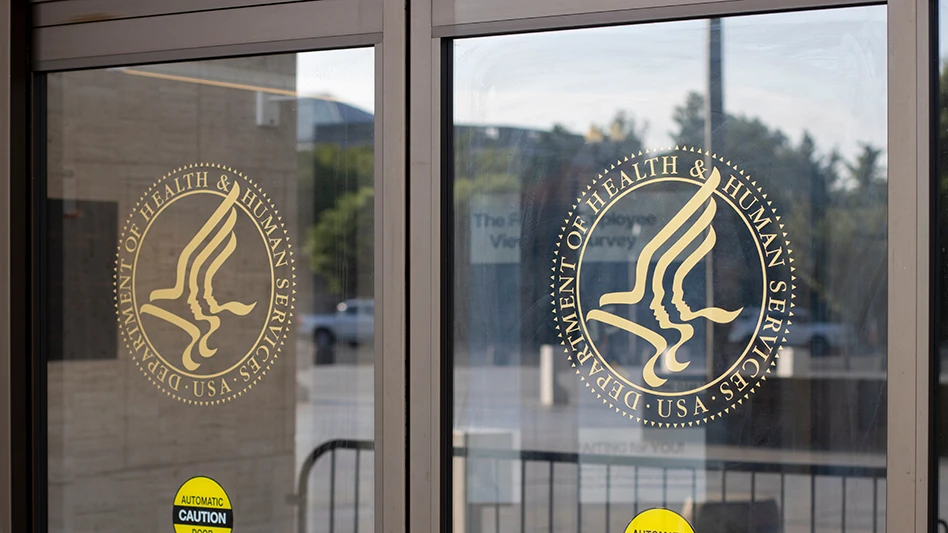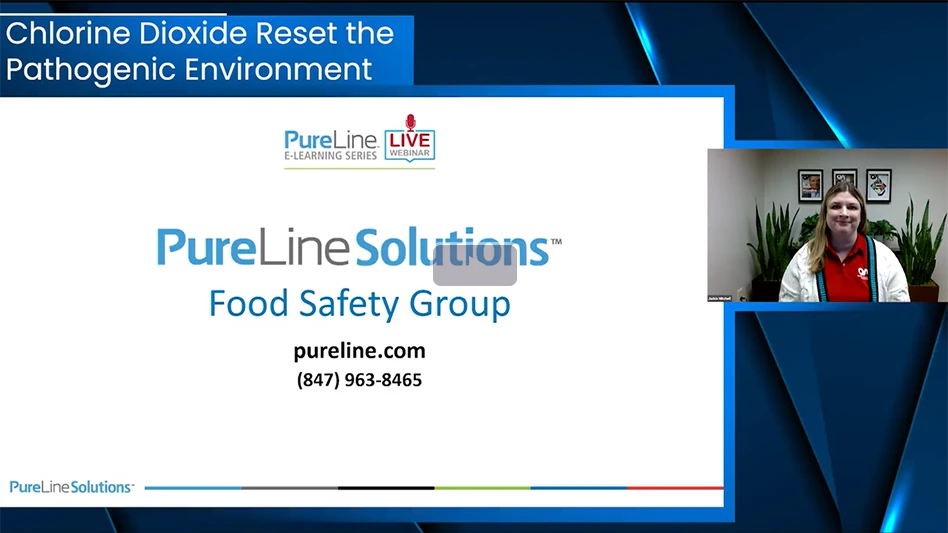
By Lisa Lupo
Since the introduction of the Food Safety Modernization Act (FSMA) as H.R. 2751 in June 2009, the focus on food safety has increased dramatically. One indicator of this is an annualized Google search of the term “food safety” from 2009 through 2016, conducted as of this writing. A search for 2009 incidents of the term yielded about 167,000 results while 2016 brought more than 5.83 million. Adding to “food safety” the term “risk management” (a key component of FSMA) increases those search results from 7,290 for 2009 to more than 67,700 for 2016. Less dramatic numbers, but a significant increase nonetheless.
While such statistics are unlikely to surprise many in the food industry, there is likely to be less understanding of the extent to which a food facility’s “food safety” and “risk management” programs can impact its bottom line in tertiary business areas such as property and liability insurance.
“A lot of what happens in the food industry relates to the ingredients,” said Nationwide Associate Vice President of Risk Management Steve Simmons. Those ingredients can come from all across the U.S. and around the world, which can expose the food company to a great deal of risk. As such, how a food company tracks its supply chain and manages risk is not simply a matter of complying with federal food safety regulations or customer requirements, it is also a critical aspect of the company’s insurability and rates.
Simmons provided the example of a multi-national retailer who sold a mislabeled product. Although no one was harmed, the product was not what its label said it was, resulting in a pay out on property damage claims for the retailer — even though the mistake was made further back in the supply chain. While such incidents could be anything from organic foods discovered to have pesticides or GMOs to unlabeled allergens in a product, “we pay a lot of claims because a product wasn’t what it was supposed to be,” Simmons said.
While one would think that this claim and cost would then track back to the supplier, it’s not always that simple when the ingredient came from a foreign supplier. “We’ve never gotten money back from countries such as Turkey or China,” he said. “So, the person who buys it from them often has to pay.”
That’s not to say that the supplier won’t ever be held liable. A problem with a supplier’s ingredient can cause a huge liability exposure, said Agribusiness President Brad Liggett. “If you (as a processor) have to throw away your ice cream because of nuts from my company, or your stir fry because of my vegetables, that creates a property damage claim, because my product is contained in your product.”
“It’s called property damage because it damaged someone else’s product,” Simmons explained. There also has been an evolution in the food decisions made by consumers, and that, he said, is driving more loss from a property damage perspective. “There are a lot of people testing product today, that’s the biggest change.”
Lack of product from a regular supplier also can cause downstream damages. For example, say the organic stir fry manufacturer has a vendor who always supplies 90% of its onions, and that vendor can’t provide any because of a recall, crop disease, pesticide detection, or other issue. If the stir fry manufacturer doesn’t have a contingency plan in place, it may not be able to produce any product for a downstream customer, distributor, foodservice provider, or retailer. If that loss is great enough, say a Chinese restaurant purchases all its stir-fry mix from that processor, it could be put out of business if the issue continues long enough.
Thus, while it was an issue of its supplier, the onus is on the restaurant to ensure it has a plan in place to manage such risk. “Make sure you don’t damage your brand or interrupt your ability to supply your customer,” Liggett said. Have a contingency plan that ensures you can continue to produce product regardless of what may happen with one particular provider.
It can be difficult for companies that have worked on a handshake for years, building relationships and trust with specific providers, to turn around and say they are going to add another provider as a contingency. “It’s hard for a lot of people that business is business,” Simmons said. But, too often, companies don’t spend enough time focused on things that could put them out of business. Regardless of the size of the business, food companies from farm to retail need to work from an enterprise management perspective, asking, “What are the main things that could cause risk?” he said. “They often don’t realize the litigation they can get into because of these things. It happens. It’s our experience.”

SUPPLY CHAIN PERSPECTIVE. Thus, from the insurance perspective, a supply chain program needs to not just be focused on food safety, but be a full quality assurance system that considers a vast array of risk management factors both upstream and downstream.
“Do you have a good program to know where the ingredients come from and how they were managed?” asked Simmons.
“We’d like to see more emphasis on clients understanding more about their vendors and downstream clients,” said Vice President of Underwriting Eric Johnson. This means not just focusing on your facility, but assessing and managing the potential risk of those with whom you do business. “Are you doing business with people who hire good drivers?” he asked. What are the quality controls they have in place? How do downstream customers process, package, and market their products? How are the workers treated? Is a safety culture encouraged?
In general, you can ask, “Is it safe?” he said. That is, is the operation dedicated to a safe environment — not only to ensure food safety for the end consumer but for the overall safety and well being of its employees as well. “Who you do business with will impact you from a rate perspective,” Johnson said. “As I’ve watched claims unfold, I’ve seen many times that our client didn’t do anything wrong, but their client (or supplier) did. And that affects their brand.”
THE IMPACT OF FSMA. While supplier risk is nothing new for food companies, what has changed is the complexity of the supply chain and the potential to lose a great deal of money. “Where it’s really changed is FSMA,” Simmons said. “There are things you were able to do four to five years ago that you can’t do any longer.” For example, in the past, some product that was unacceptable as food for humans could be sold off as animal feed. “You can’t do that anymore because hogs are part of the food chain.
“Regulation generates liability,” Simmons said. “Government regulation, to an insurance company, is a roadmap for liability for plaintiff attorneys. But if you can show where a client did everything right, it may reduce or eliminate damage awards.”
As such, Liggett said, “You need to be in compliance, because lack of compliance really crushes you in the ability to defend a claim.”
“As onerous as FSMA can be, it’s forcing the food industry to put tighter controls on where product comes from,” he added. Companies have to look at and correct vulnerabilities, conduct quality checks on incoming goods, and make sure their suppliers and suppliers’ suppliers have good quality measurements.
As to those who see the amount of documentation required by FSMA as being over-restrictive: “People complaining about all the recordkeeping and documentation tells us one thing: They weren’t doing it,” Liggett said. But that recordkeeping and documentation is a key factor in a company’s insurability because accurate documentation is a key factor in a company protecting itself in potential litigation, and in accurately tracing a product or ingredient in a recall, so more than is necessary doesn’t have to be pulled in an “abundance of caution.”
But a challenge that many food companies face in compliance is that, Simmons said, “FSMA tells you what you have to do, it doesn’t tell you how to do it.” And small to mid-size companies rarely have lawyers to tell them how to comply. But saying “I have no idea what I’m supposed to do,” isn’t an option, he said. “That answer doesn’t work.” Rather, it will generate losses for both the food company and the insurer.
A RESOURCE PROVIDER. Agribusiness coverage is not new in the insurance industry, but the increasing complexity of the supply chain is making food companies less attractive to many insurers. Thus, about four years ago, Nationwide Agribusiness began a concerted effort to help food companies, developing a program to not only insure businesses throughout the supply chain, but also to provide evaluation and consultation by experts from the food industry, offer free food safety training and resources, and establish partnerships with its members to make the learnings a two-way street.
Since that time, that two-way street has grown into a multi-lane highway, augmented by the company’s Agribusiness Risk Management Consultants (RMCs), the line-up of which reads like a Who’s Who of food industry veterans, all of whom were former auditing company directors, including Lance Reeve (food defense), Ed Hitch (food safety education), and Paul Stevenson (production, quality, and IP systems). All are certified HACCP instructors and FSPCA lead instructors in human food and animal feed; they are members of food industry associations such as IAOM, NGFA, and IAFP; and they speak at association conferences.
Insuring food companies differs from those of other industries because, Reeve said, “The food industry is ultimately working with a raw material that came from the ground. The products may undergo little or no processing to very complex manufacturing and be handled by multiple companies. In order to produce safe and wholesome products, food safety must start at the farm and ends with the consumer.”
Because of such differences, Simmons said, “The experts we hire are not insurance experts, but are people who come from the food industry. They can learn insurance and apply that to their expertise.”
As with any insurance — be it auto, home, or commercial — neither the insurer nor the client wants to have loss from a claim, at least in part because both will lose. That is, even when a claim is covered under insurance, the food facility will still face many soft costs that are never covered. It is for this reason that Simmons said, “The goal is to learn together, then use our experience to try to prevent loss.”
Not only do the RMC’s provide the training and consultation for clients, Reeve said, “We work with internal staff to help them better understand the food and feed industry.”
“The better our agents and brokers understand our product and the needs of our clients, the better they can address their needs and make them safer,” said Vice President of Sales Dirk Pollitt. As such, one aspect of the agribusiness focus was the development of a Food Certification Program for its agents and brokers. “We are striving to create agents who can be more productive and help protect our food clients.”
In the program, the RMCs educate the agents and brokers on the roles of FDA and USDA as relates to food safety, the unique aspects of food accounts, how FSMA is impacting the food industry, and the specific exposures and risks of the various types of food, such as meats, produce and nuts, Pollitt said. “We’ve taken a deep dive of clients we’ve insured and assessed any losses, to determine how to help clients and to provide education for the food industry.”
THE INSURANCE EVALUATION. “We talk a lot about client fit — looking for clients and prospects who really have an eye on food safety,” Pollitt said. “We want clients who want to work with us on risk management solutions. If we come across a prospect who is not interested in us using our expertise to help make them better, they are probably not a fit.”
As such, prospect evaluations may start with a desktop review, such as researching the company’s food safety or regulatory history, reviewing loss runs/history, or evaluating food/feed safety plans that have been submitted, then include a facility evaluation, Reeve said.
Similar to third party-type audits, but in a condensed time frame, the goal of the facility evaluation is to get a snapshot of the overall food/feed safety practices and commitment to the programs, Reeve said. It will include evaluation of areas such as:
- Personnel practices, GMPs, condition of equipment and the facility, types of foreign object controls and equipment, sanitary transportation practices, etc.
- Supplier approval programs and contracts.
- Written recall and traceability programs and mock recall performance.
- Compliance with and understanding of regulations, including FSMA.
- A commitment to a food safety culture from the CEO to the production employee.
Underwriting then utilizes the compiled information to determine if insurance will be offered and at what cost. “Recalls, food safety issues, consumer illnesses and injury will impact decision making about a company’s general liability insurability and costs,” Reeve said.
This provides a tangible benefit for both sides, Pollitt said. “We have all the data that supports the fact that those who focus on risk management have lower loss costs. So, from a client standpoint, ultimately we’re trying to protect them against loss — while ensuring they have coverage to stay whole should the worst happen.”
“There are different needs now in food,” Liggett said. “FSMA was such a game changer; people need help and advice, someone to walk them through it.” And that “someone” can be your insurance provider. “Talk to your insurance company,” he said. “It’s the mid-size company that often doesn’t have the resources, so we provide them with resources.”
Even with such focused programs, expert consultants, and dedicated partnerships, a food company should never consider insurance coverage to be its answer to risk management. “Use insurance as a part of your risk management, not as your risk management,” Simmons said. “Our job is to help companies take on as much risk retention as they can to help manage their operation instead of paying it out to insurance. Otherwise, just buying insurance is the worst investment you can make.”
The author is Editor of QA magazine. She can be reached at llupo@gie.net.

Explore the February 2017 Issue
Check out more from this issue and find your next story to read.
Latest from Quality Assurance & Food Safety
- Kim Heiman Elected to Second Term as President of Wisconsin Cheese Makers Association
- FAO Launches $150 Million Plan to Restore Ukrainian Agricultural Production
- Pet Food Company Implements Weavix Radio System for Manufacturing Communication
- Penn State Offers Short Course on Food Safety and Sanitation for Manufacturers
- USDA Announces New Presidential Appointments
- FDA to Phase Out Petroleum-Based Synthetic Dyes in Food
- IFT DC Section to Host Food Policy Event Featuring FDA, USDA Leaders
- CSQ Invites Public Comments on Improved Cannabis Safety, Quality Standards





